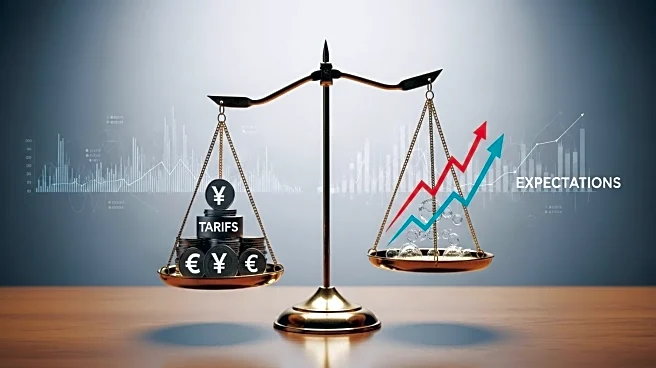What is the story about?
What's Happening?
The Federal Reserve is contemplating a 25-basis-point rate cut in September 2025, with an 85% probability of action anticipated by investors. This decision is influenced by persistent inflation, which remains above the 2% target, and signs of a softening labor market. Political pressures, including threats from the Trump administration to remove Fed officials opposing rate cuts, add complexity to the situation. The Fed's decision is further complicated by conflicting economic signals, such as robust GDP growth projected at 2.3% for Q3 2025 and stable financial conditions, which suggest no urgent need for cuts. However, inflation resulting from tariff policies has introduced uncertainty, prompting Fed officials to warn against delaying action that could harm the labor market.
Why It's Important?
The potential rate cut by the Federal Reserve holds significant implications for various sectors of the U.S. economy. Rate-sensitive sectors, such as consumer discretionary and technology, particularly AI-driven firms, stand to benefit from lower borrowing costs. This could lead to increased earnings growth expectations and improved consumer confidence. Small-cap stocks, especially those in the Russell 2000, may outperform due to their sensitivity to rate cuts. Conversely, defensive sectors like utilities and healthcare might underperform as investors shift towards cyclical plays. The decision also carries risks, including political volatility and the possibility of a slower-than-expected pace of cuts, which could affect sector rotations and valuations.
What's Next?
The Federal Reserve's decision in September will test its ability to navigate a fragile economic landscape. While a rate cut is likely, its magnitude and timing will influence equity valuations and sector performance. Investors are advised to prioritize rate-sensitive assets while remaining vigilant against macroeconomic headwinds. The Fed's path forward remains uncertain, with conflicting signals and political pressures adding to the complexity of the decision-making process.
AI Generated Content
Do you find this article useful?















